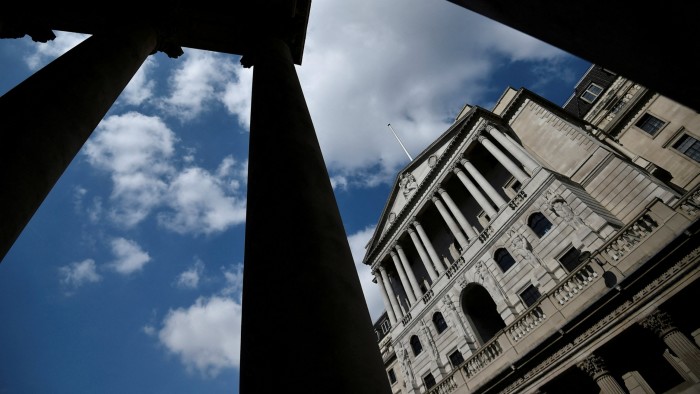Stay informed with free updates
Simply sign up to the UK interest rates myFT Digest — delivered directly to your inbox.
The Bank of England is expected to lower interest rates by another quarter point this week as policymakers weigh up signs of a weakening UK economy alongside the prospect of a short-term pick-up in inflation.
Financial markets have been betting that the BoE’s Monetary Policy Committee will on Thursday reduce its official rate to 4.5 per cent in the third cut to the cost of borrowing in just over half a year.
But deliberations by the MPC this week are set to be complicated by the prospect of a resurgence of inflation in the UK, coupled with a global trade war after US President Donald Trump imposed tariffs on Canada, Mexico and China.
The BoE is also grappling with sagging UK business confidence and surveys point to corporate redundancies. Data suggests the UK economy probably failed to grow in the final months of 2024.
“We think that the weakness in the recent growth data, deterioration in labour market indicators and gradual progress with underlying services inflation will mean that there is widespread support for a [quarter-point] cut,” said Jari Stehn, chief European economist at Goldman Sachs.
Markets are pricing in about three rate reductions in total this year as the BoE navigates firm wage pressures alongside the evidence of a stagnating economy. Many economists expect an 8-1 vote at the MPC in favour of a downward move, with Catherine Mann seen as the most likely dissenter.
Consumer prices grew an annual 2.5 per cent in December, slower than analysts expected, close to the official 2 per cent target and much lower than the double-digit levels recorded in 2022.
Services inflation, which is closely watched by the BoE as a gauge of underlying price pressures, slowed sharply to 4.4 per cent in December from 5 per cent previously.
However, higher energy prices may push up inflation in the coming months. Analysts at Pantheon Macroeconomics said the BoE could forecast annual CPI growth of 3 per cent or higher in the second quarter of 2025, well above November forecasts of about 2.6 per cent.
Chancellor Rachel Reeves’ decision to raise employer national insurance contributions alongside a sharp increase in the national minimum wage has increased labour costs, putting the BoE on guard for an increase in prices passed on to consumers.
This has come alongside evidence of a weakening economy, which will probably weigh down on growth and inflation in the longer term. The BoE in December said it expected zero growth in the final quarter of 2024, weaker than the 0.3 per cent expansion forecast in its November forecasting round.
Some economists expect the BoE will have to pare back its forecast for 1.5 per cent GDP growth this year.
The MPC will need to grapple with a potential “stagflationary shock”, said Rob Wood at Pantheon. “All surveys now show growth slowing and inflation pressure rising but differ on the severity of the moves.”
Among those watching the BoE decision and the bond market reaction closely will be Reeves, who is awaiting a key set of forecasts from the Office for Budget Responsibility in March.
A sell-off in gilt markets in early January triggered concerns that the headroom against Reeves’ key deficit rule — that current spending must be funded by tax receipts by 2029-30 — will be whittled away by higher government interest payments.
Last week the European Central Bank cut its benchmark rate by a quarter-point to 2.75 per cent, while the Bank of Canada slashed its key rate by half a point to 3.25 per cent. By contrast, the US Federal Reserve left rates unchanged at 4.25 to 4.50 per cent as forecasters including the IMF expect the US to outpace other G7 economies this year.







